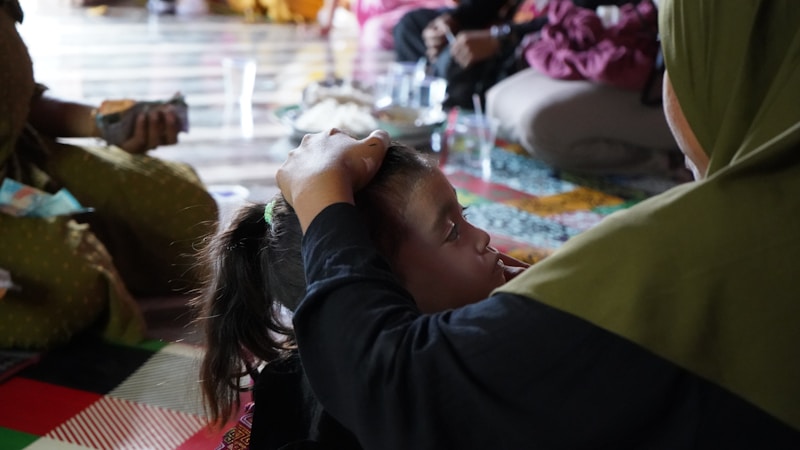Adapting to Changes in Consumer Demographics for Wedding Dresses: A Comprehensive Guide
Adapting to Changes in Consumer Demographics for Wedding Dresses: A Comprehensive Guide
In today’s ever-evolving market, understanding consumer demographics is essential for any business, especially in the wedding dress industry. As societal norms shift, so too do the preferences and expectations of brides-to-be. This article will explore the critical factors influencing these changes and provide insights into how wedding dress retailers can adapt their strategies to cater to a diverse clientele. In doing so, we will address key demographic trends, potential challenges, and actionable recommendations for success.
Understanding the Shift in Consumer Demographics
The landscape of bridal fashion is changing dramatically. Traditional demographics are being redefined, influenced by a variety of factors, including cultural shifts, economic changes, and technological advancements. For instance, the rise of the LGBTQ+ community has diversified the types of weddings and preferences for attire. Additionally, the increasing age of first-time brides and changing values around marriage have also impacted consumer behavior.
Key Demographic Trends
- Age: More individuals are choosing to marry later in life. According to recent studies, the average age for first marriages has steadily increased to 30 for women and 32 for men.
- Cultural Influence: With globalization, brides from various backgrounds are looking for wedding dresses that reflect their heritage while still merging contemporary styles.
- Body Positivity: The movement towards body inclusivity is a crucial trend. Brides expect wedding dress retailers to offer a wider range of sizes and styles that cater to various body shapes.
- Eco-consciousness: Many modern consumers are becoming increasingly aware of environmental issues and are seeking sustainable options in their wedding attire.
| Demographic Factors Affecting Wedding Dress Choices | ||
| Age Group | Preferred Style | Price Range |
| 18-25 | Trendy, budget-friendly | $500-$1,000 |
| 26-35 | Traditional with modern twists | $1,000-$3,000 |
| 36+ | Chic, sophisticated | $2,000-$5,000+ |
Challenges Wedding Dress Retailers Face
As consumer demographics shift, wedding dress retailers encounter several challenges that must be addressed to remain competitive. Understanding these challenges is crucial for adaptation.
- Meeting Diverse Preferences: With an increase in cultural diversity among brides, it can be challenging to provide designs that resonate with different traditions and styles.
- Size Inclusivity: Offering a broad size range is essential; however, not all retailers are equipped to produce dresses in varied sizes, leading to missed opportunities.
- Cost Management: As the industry trends towards sustainable practices, retailers may face increased production costs, which could raise prices for consumers.
- Marketing to New Demographics: Traditional marketing strategies may resonate less with younger generations, requiring innovative approaches to engagement.
Strategies for Adapting to Changes
Wedding dress retailers have the opportunity to thrive by implementing strategic changes to meet the evolving demands of their customers:
- Diverse Product Offerings: Expand the range of styles, sizes, and fabrics to cater to a more diverse clientele.
- Cultural Competency: Invest in understanding cultural practices related to weddings, which may help in customizing offerings for specific communities.
- Sustainability Practices: Incorporate sustainable practices in sourcing materials and production methods. This not only helps the environment but also appeals to eco-conscious consumers.
- Innovative Marketing: Utilize social media platforms and influencer collaborations to reach younger audiences effectively. Create engaging content that showcases real brides of all backgrounds.

Case Studies: Successful Adaptations in the Market
Several brands have successfully navigated the changing landscape of consumer demographics, providing valuable insights for others in the industry. By studying their approaches, we can identify best practices:
- Brand A: This retailer introduced a customizable wedding dress option that allowed brides to select fabric, color, and style elements. As a result, they saw increased sales from varied demographics.
- Brand B: By embracing body positivity, they launched a marketing campaign featuring models of all sizes. This inclusivity resonated with a broader audience, leading to a 30% increase in online sales.
- Brand C: A local boutique focused on eco-friendly materials and ethical sourcing. Their transparent approach to sustainability attracted environmentally-conscious consumers, boosting their profile in that niche.
The Role of Technology in Adapting to Demographic Changes
Technological advancements play a crucial role in how wedding dress retailers collect data and adjust their offerings accordingly. Incorporating technology into business strategies can enhance customer experience and operational efficiency.
- Data Analytics: Utilizing data analytics tools helps retailers understand consumer behavior and preferences, allowing for better inventory management and marketing strategies.
- Virtual Fitting: The implementation of AR (Augmented Reality) technologies can provide customers with virtual try-on experiences, catering to the growing demand for online shopping.
- Social Media Engagement: Platforms like Instagram and TikTok allow for real-time feedback from customers, helping brands to stay attuned to trends.
Conclusion: Navigating the Future of Wedding Dresses
As consumer demographics continue to evolve, wedding dress retailers must be proactive in adapting their strategies to meet the changing needs of their audience. By understanding the shifts in age, culture, and values, brands can better align their offerings and marketing efforts. Emphasizing diversity, inclusivity, and sustainability will be key to capturing a broader market and ensuring long-term success.
Recommendations for Future Success: Retailers should invest in market research to stay informed about demographic trends, prioritize sustainability, and leverage technology to enhance customer experience. Establishing an inclusive brand identity and fostering community engagement will not only attract diverse clientele but also strengthen brand loyalty.
By embracing these changes, wedding dress retailers can turn challenges into opportunities, ultimately creating a more vibrant and inclusive market.
